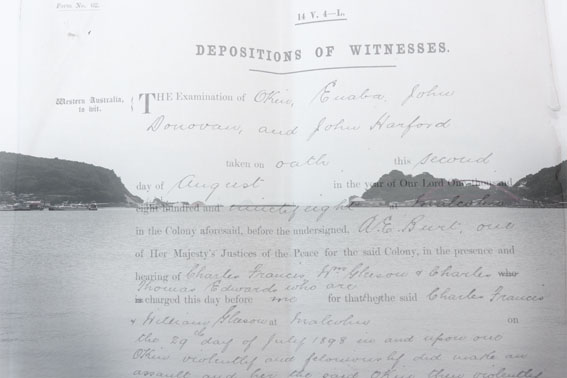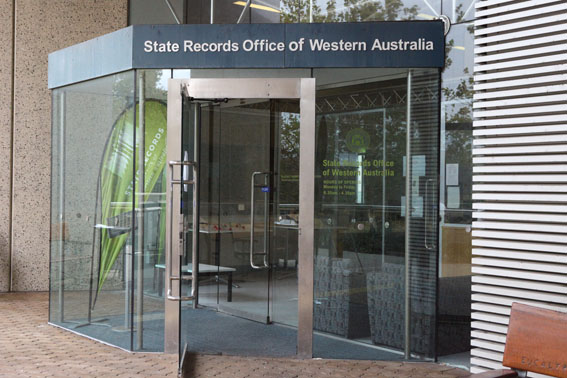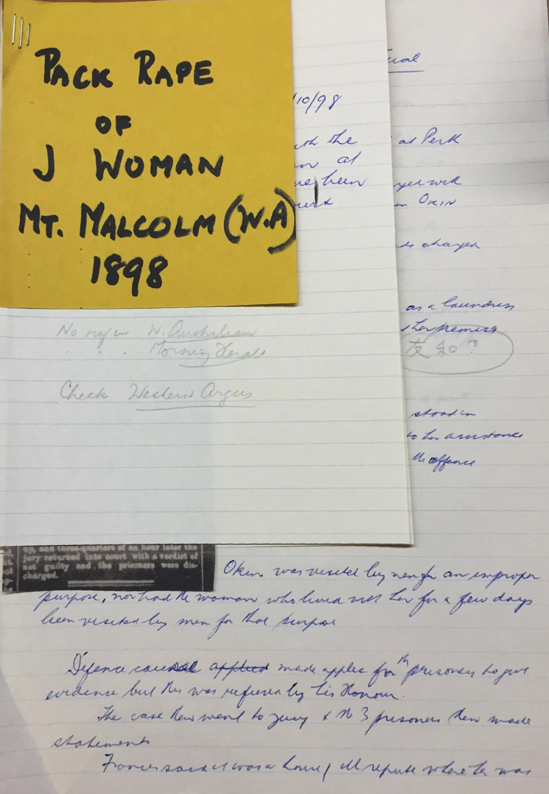Here is the Bibliography for Butterfly Project as of 8 December 2017, upon finishing the first draft of a theatre script, loosely entitled the Butterfly Project:
ABC Radio National, 2010. British Sculptor Antony Gormley, Australia: ABC Radiio National. Available at: http://www.abc.net.au/radionational/programs/latenightlive/british-sculptor-antony-gormley/3102230 [Accessed November 20, 2017].
Artemis International, 2015. Inside Australia, Artemis International. Available at: https://vimeo.com/ondemand/insideaustralia [Accessed November 21, 2017].
Attorney-General’s Department, 2015. DISCUSSION PAPER: OVERVIEW The National Opera Review. Available at: https://www.arts.gov.au/sites/g/files/net1761/f/NOR-Discussion-Paper-8-October-2015.pdf [Accessed December 7, 2017].
Australia, N.G. of, OUT OF THE WEST – | | WA Cobb and Co coach at Mt Malcolm. National Gallery of Australia. Available at: http://nga.gov.au/exhibition/OUTWEST/Default.cfm?IRN=209216&BioArtistIRN=38773&MnuID=3&GalID=5&ViewID=2 [Accessed August 14, 2015].
Ballantyne, P., 2002. The fascination with Australian ruins: some other meanings of “Lost Places.” University of Melbourne Postgraduate Association. Available at: http://go.galegroup.com/ps/i.do?id=GALE%7CA152513840&sid=googleScholar&v=2.1&it=r&linkaccess=fulltext&issn=14472538&p=AONE&sw=w&authCount=1&u=61cranbrook&selfRedirect=true# [Accessed December 1, 2017].
Bonze.com, Map of Butterfly North-South Mine in Western Australia – Bonzle Digital Atlas of Australia. Available at: http://www.bonzle.com/c/a?a=p&p=292287&cmd=sp [Accessed August 14, 2015].
Bonzle.com, Map of Butterfly in Western Australia showing Leonora (highlighted in purple) – Bonzle Digital Atlas of Australia. Available at: http://bonzle.com/c/a?a=p&p=9400&op=691&cmd=sp&c=1&x=121%252E40191&y=%252D29%252E0522&w=48157&mpsec=0 [Accessed August 14, 2015].
BURROWS, J., 1939. 12 Jan 1939 – OVER THE PLATES. EARLY MT. MALCOLM. Life in the … Western Mail. Available at: http://trove.nla.gov.au/ndp/del/article/44792175 [Accessed August 14, 2015].
Commonwealth of Australia, 2016. NATIONAL OPERA REVIEW FINAL REPORT. Available at: https://www.arts.gov.au/sites/g/files/net1761/f/national_opera_review_final_report.pdf [Accessed December 7, 2017].
Correspondent, 1898. An Alleged Capital Offence – The West Australian 8 Oct 1898. The West Australian. Available at: http://trove.nla.gov.au/newspaper/article/3207708?searchTerm=japanese woman gleeson&searchLimits=sortby=dateAsc%7C%7C%7Cl-state=Western+Australia%7C%7C%7Cl-availability=y%7C%7C%7Cl-australian=y%7C%7C%7Cl-title=30 [Accessed August 14, 2015].
Correspondent, The Argus 20 Oct 1898. Available at: http://trove.nla.gov.au/ndp/del/printArticlePdf/9856822/3?print=n [Accessed August 14, 2015].
David Belasco (Founded on John Luther Long’s Story), 1928. Madame Butterfly: A Tragedy of Japan. Available at: http://www.columbia.edu/itc/music/NYCO/butterfly/images/belasco_sm.pdf [Accessed December 6, 2017].
Degabriele, M. & Degabriele, M., 1996. From Madame Butterfly to Miss Saigon: One Hundred Years of Popular Orientalism. Critical Arts: A South-North Journal of Cultural & Media Studies, 10(2), pp.105–114.
Department of Premier and Cabinet, 1981. Government Gazette of WA 1981, Available at: http://www.slp.wa.gov.au/gazette/gazette.nsf/gazlist/1F52798A39F0AEE4C82573D60082F3D9/$file/gg005.pdf [Accessed August 17, 2015].
Footage: Alicia Whittington, P. and W.W.K.J., Desert lakes fill with life — Kanyirninpa Jukurrpa: Martul Cultural Knowledge Program, Australia. Available at: http://www.kj.org.au/news/desertlakesbandedstilts [Accessed November 21, 2017].
Fukui, M., 2013. Madame Butterfly’s revenge. Griffith Review, 40. Available at: https://griffithreview.com/articles/madame-butterflys-revenge/ [Accessed August 9, 2015].
Hayashi, K., 2005. Watashi wa Senso Hanayome desu, Kanazawa: Hokkoku Shinbunsha.
Hayashi, K., Tamura, K. & Takatsu, F., 2002. War Brides Senso Hanayome: kokkyo o koeta onnnatachi no hanseiki, Tokyo: Fuyo Shobo.
Jenkins, Chadwick, C.U., New York City Opera Project: Madama Butterfly. Available at: http://www.columbia.edu/itc/music/NYCO/butterfly/luther.html [Accessed December 6, 2017].
Jones, N., 2002. Number 2 home: a story of Japanese pioneers in Australia, Fremantle: Fremantle Arts Centre Press.
Kaneko, Y., 1992. Baishō no shakaishi, Tokyo: Yuzankaku Shuppan.
Kato, M., 2008. Narrating the Other : Australian Literary Perceptions of Japan, Clayton, Vic: Monash Asia Institute.
Kim, I., 1980., Yujo karayuki, ianfu no keifu, Tokyo: Yuzankaku Shuppan.
Kim, I., 1997. Yujo, karayuki, ianfu no keifu, Tokyo: Yuzankaku Shuppan.
Kurahashi, M., 1990. Karayukisan no uta, Tokyo: Kyouei Shobo.
Lo, J., Diaspora, Art and Empathy. In A. Aleida, ed. Empathy and its Limits. Palgrave MacMillan.
Marinova, D. et al., 2010. Desert Knowledge CRC Working Paper 67 Profile of Leonora: A sustainability case study, Available at: http://www.nintione.com.au/resource/DKCRC-Working-paper-67-Profile-of-Leonora_A-sustainability-case-study.pdf.
Masanao, K., 1990. Karayuki san no uta, Tokyo: Kyoei Shobo.
Mihalopoulos, B., 1994. The Karayuki-san The Making of Prostitutes in Japan : Social Justice, 21(2), pp.161–184. Available at: http://www.jstor.org/stable/29766813.
Mihalopoulos, B., 2001. Ousting the “prostitute”: Retelling the story of the Karayuki-san. Postcolonial Studies, 4(2), pp.169–187.
Mihalopulos, B.V., 2001. Finding Work Through Sex: Transforming pre-war Japanese female migrant labourers into prostitutes 1870-1930. New York University.
Mining Atlas, Map of Butterfly goldmine. Available at: https://mining-atlas.com/operation/Butterfly-Gold-Mine.php [Accessed September 18, 2017].
Miyakoka, K., 1968. Shofu Kaigai Ruroki: mou hitotsu no Meiji, Tokyo: Sanichi Shobo.
Museum Victoria, 1886. Negative – Men at North Star Mine, Mount Malcolm, Western Australia, 1896 – Museum Victoria. Available at: http://museumvictoria.com.au/collections/items/767867/negative-men-at-north-star-mine-mount-malcolm-western-australia-1896 [Accessed August 14, 2015].
Nikkei Kokusai Kekkon Shinbokusha Osutoraria Shibu, Nikkei Kokusai Kekkon Shinbokusha Nyusu Reta.
Pedler, R.D., Ribot, R.F.H. & Bennett, A.T.D., 2014. Extreme nomadism in desert waterbirds: flights of the banded stilt. Biology Letters, 10(10), pp.20140547–20140547. Available at: http://rsbl.royalsocietypublishing.org/cgi/doi/10.1098/rsbl.2014.0547 [Accessed November 20, 2017].
Schickling, D. & Vilain, R., Puccini’s “Work in Progress”: The So-Called Versions of “Madama Butterfly.” Music & Letters, 79, pp.527–537. Available at: https://www.jstor.org/stable/854624 [Accessed December 1, 2017].
Shoaf, J.U. of F., The stories of Madame Butterfly. University of Florida. Available at: http://users.clas.ufl.edu/jshoaf/Jdolls/jdollwestern/photos/butterrfly.html [Accessed December 6, 2017].
Sissons, D., Japanese in Australia – war brides, Papers of David Sissons, National Library of Australia, Series 27, Box 60 MS3902
Sissons, D., Japanese in Australia – photographs, Papers of David Sissons, National Library of Australia, Series 23, Box 58 MS3902
Sissons, D., Japanese prostitutes in Australia, Papers of David Sissons, National Library of Australia, Series 5, Box 13 MS3092
Sissons, D.C.S. (David C.S., 1977. ’Karayuki-san: the Japanes prostitutes in Australia, 1887-1916. Historical Studies, University of Melbourne, 17(68 & 69).
Sissons, D.C.S. (David C.S., 1990. Japanese Performers in Australia in the Nineteenth Century: The Sakuragawa Troupe (1873-1888). , pp.1–7.
Sissons, D.C.S. (David C.S., 1999. Japanese Acrobatic Troupes Touring Australia 1867 – 1900. Australasian Drama Studies, 35, pp.73–107.
Sissons, D.C.S., 1977. Karayuki-san: Japanese prostitutes in Australia, 1887 – 1916 – I. Historical Studies University of Melbourne, 17(68), pp.323–342.
Sissons, D.C.S., 1977. Karayuki-san: Japanese prostitutes in Australia, 1887-1916 – II. Historical Studies, University of Melbourne, 17(No 69), pp.474–488.
Smith, E., 2008. Representations of the Japanese in contemporary Australian literature and film. New Voices, 2(1978), pp.41–62.
Sone, S., 1990. The Karayuki-San of Asia, 1868-1938: The Role of Prostitutes Overseas in Japanese Economic & Social Development. Murdcoh University.
State Library of WA, Mount Malcolm – Outback Family History. Available at: http://members.iinet.net.au/http://www.outbackfamilyhistory.com.au/records/record.php?record_id=428&town=Mount Malcolm [Accessed August 14, 2015].
State Library of WA, Outback Family History | Home. Available at: http://www.outbackfamilyhistory.com.au/records/town.php?town=Mount Malcolm [Accessed August 14, 2015].
Strickland, B., Antony Gormley’s “Inside Australia” – Lake Ballard. Available at: http://lakeballard.com/ [Accessed December 7, 2017].
Tamura, K., 2001. Home Away From Home: The Entry of Japanese War Brides into Australia. In P. Jones & V. Mackie, eds. Relationships: Japan and Australia 1870s-1950s. Parkville: The History Department, The University of Melbourne.
Tamura, K., 2002. An Ordinary Life? Meanjin, 60(1), pp.127–131.
Turnbull, C.M., 1997. Ah Ku and Karayuki-San: Prostitution in Singapore 1870-1940. Pacific Affairs, 70(2), pp.292–293.
WA Now and Then, GHOST TOWNS | Western Australia. Available at: http://www.wanowandthen.com/ghost-towns3.html [Accessed August 14, 2015].
Walkatjurra Cultural Centre, Aboriginal Australian Art and Culture in Leonora Western Australia. Available at: https://walkatjurra.wordpress.com/ [Accessed August 14, 2015].
Warren, J.F., 1993. Ah ku and karayuki-san: prostitution in Singapore, 1870-1940, Oxford: Oxford University Press.
Western Australia News, A Bicultural Future for Leonora Aboriginal Languages. Available at: http://www.ourlanguages.net.au/news/wa/item/1347-a-bicultural-future-for-leonora-aboriginal-languages.html [Accessed August 14, 2015].
Yamada, M., 1992. Joshigun aishi: karayuki, shofu, ito kojotachi no sei to shi, Tokyo: Kojin Sha.
Yamazaki, T., 1973. Sandakan Hachiban Shoukan: teihen joseishi josho, Tokyo: Chikuma Shobo.










